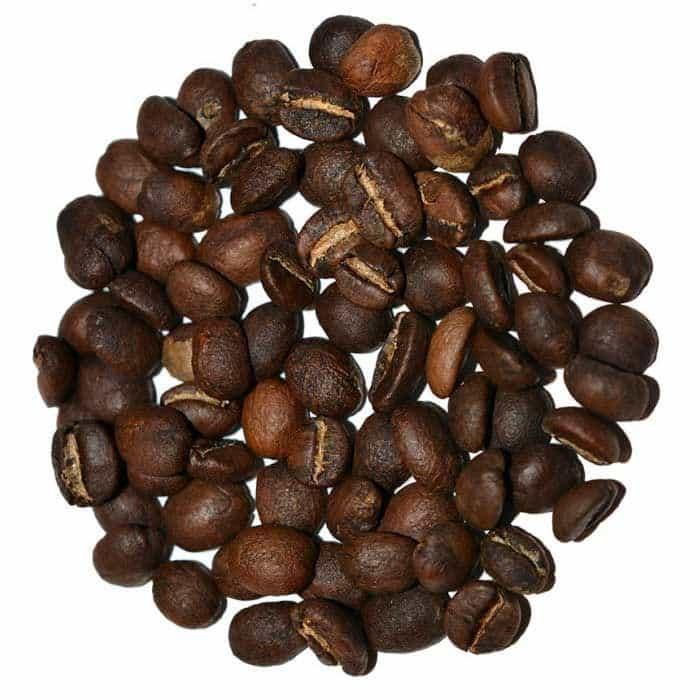A Brief History of Coffee and Legends
Coffee Legends
There are many, many stories and legends about the origins of coffee and its stimulating effects. One of the oldest tales is about a young goat herder in Ethiopia in around 850 AD. He had noticed that after eating a certain kind of berry, his goats would become particularly lively.
Monks then tried the fruit but were so disappointed by the bitter flavor that they threw it in the fire. Soon, a delicious aroma was wafting around their nostrils. The monks were so curious that they used the roasted fruits to create a coffee brew, which they saw as a gift from God because it helped them to stay awake half the night.
Another legend relates how the Archangel Gabriel brought a dish of the dark coffee elixir to the prophet Mohammed, who lay dying. Thanks to the divine power it gave him, he unsaddled 40 knights and went on to create the greatest Islamic empire ever seen. The Arabs used so much coffee that the Christian church denounced coffee as "the hellish black brew." But Pope Clement VIII found it so great tasting that he baptized it and made it a Christian beverage saying "coffee is so delicious it would be a pity to let the infidels have exclusive use of it."
Discovery of Coffee
The culture of coffee-drinking goes back to the 11th century. It was then that coffee was first imported to Arabia from its original home in Ethiopia. The Persians were enraptured by the invigorating effects of this new "wine of Islam" because real wine was strictly forbidden to Muslims. Turkish people claimed coffee to be an aphrodisiac and husbands kept their wives well supplied; if the husband refused, it was a legitimate cause for a wife to divorce! The first coffee houses were opened in Damascus and Aleppo in 1530 and 1532. The word "coffee" comes from the ancient Arabic "qahwah". In the second half of the 15th century, coffee spread to the Kingdom of Arabia via Mecca and Medina and went on to reach Cairo in 1510. In the first half of the 16th century, the Osmanic Kingdom reached its zenith. Coffee came to play an increasingly important role in Arabia, Asia Minor, Syria, Egypt and in South Eastern Europe. Coffee conquers Europe.
In 1615, Venetian merchants brought back the first sacks of coffee to western Europe. Its delicious aroma and invigorating effects rapidly established it as a favorite beverage, and coffee houses were soon springing up throughout Europe. Their minds never far from business, the bourgeoisie were soon singing the praises of coffee's sobering effects, which turned drunkards into reliable workers. Dutch and English seafarers exported the plant to their colonies all over the world.
When the Turks were forced to break off their siege of Vienna in 1683, they left behind them 500 sacks of coffee. An enterprising Polish businessman used it to open the city's first coffee house.
The spread of the beverage was accompanied by huge growth of coffee tree cultivation. As early as the end of the 17th century, successful efforts were made to grow coffee trees in greenhouses. One of these plants was sent to Louis XIV in Paris as a gift in 1714. This single plant is thought to have been the ancestor of millions of coffee trees.
Coffee become a signature cultural drink in America at the time of the Boston Tea Party in 1773, when Americans revolted against King George's Tea Tax and, the Continental Congress declared coffee the official national beverage. Today it still exists as a form of diversion for young people in coffee houses in France and Italy, Romania and Spain and of course all over the Mediterranean.
Coffee in the 20th Century
In the early 20th century, Brazil was the worlds biggest coffee producer. Today almost the entire production of coffee comes from Central America, Brazil and the tropical parts of South America. World coffee production amounts to around 100 million bags a year with Brazil in first place representing about of total production. 8 million bags are produced in Brazil.
Coffee roasting in the home was definitively replaced by the finished industrial product. In 1901 the Japanese Dr Sartori Kato presented the first soluble coffee powder. In 1938 the Nestle company laid the foundation for the commercial marketing of soluble coffee (instant coffee).
The scale of coffee use is reflected in the trend of world raw coffee consumption in the last 250 years.
1750: 600,000 bags
1850: 4 million bags
1950: 36 million bags
1995: 94 million bags
2000: 103 million bags
The demand for coffee has made this hot beverage the second most important traded commodity after petroleum products. This trend was accompanied by phases of overproduction, incineration of surplus stocks, collapsing prices, world economic crisis, declining consumption during the two world wars and the creation of world coffee agreements to stabilize coffee prices. In Germany after the end of the Second World War, coffee became a symbol of economic reconstruction and the economic miracle. Coffee drinking was synonymous with being able to afford things again.
Thanks to Juraworld.

